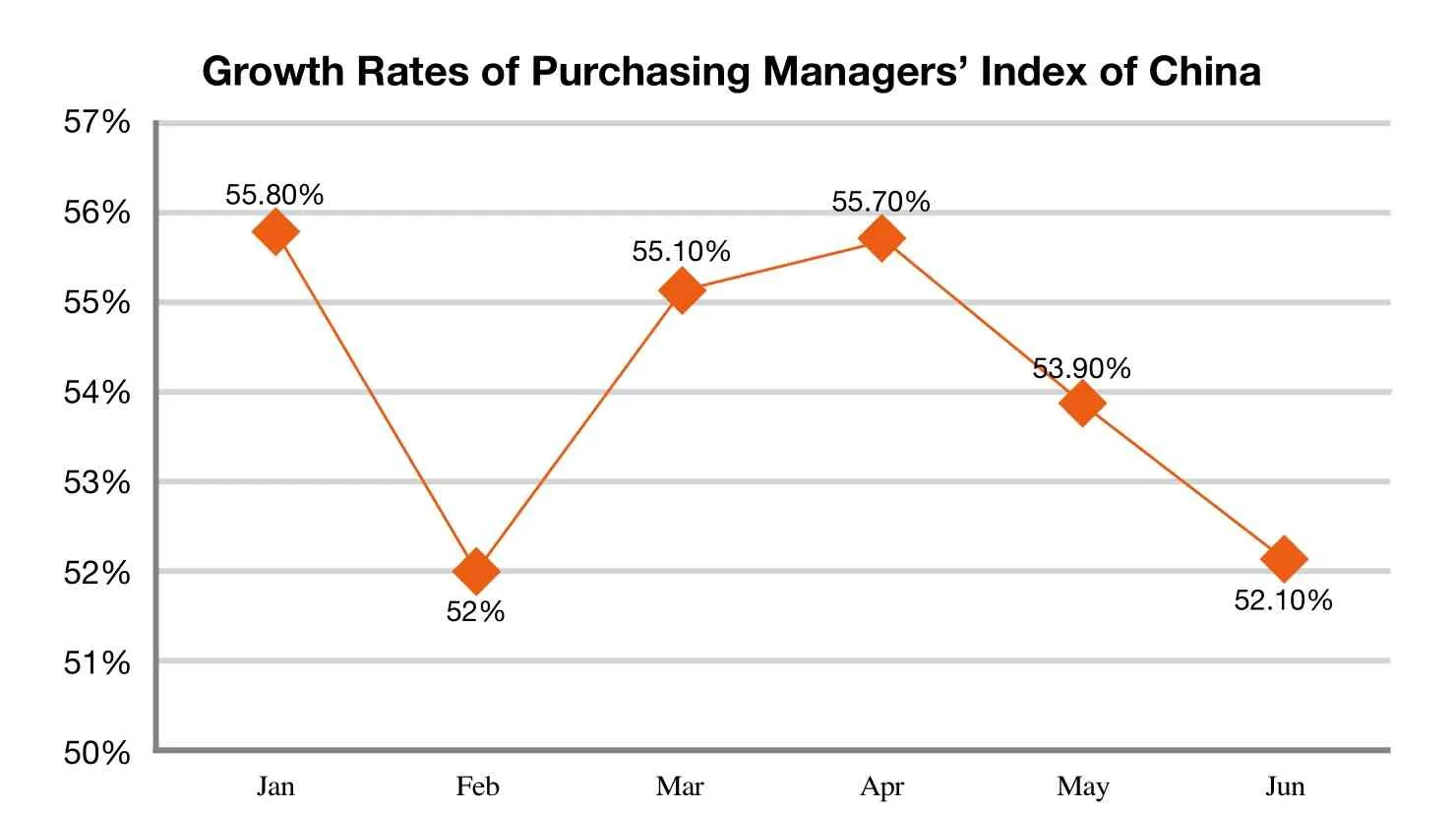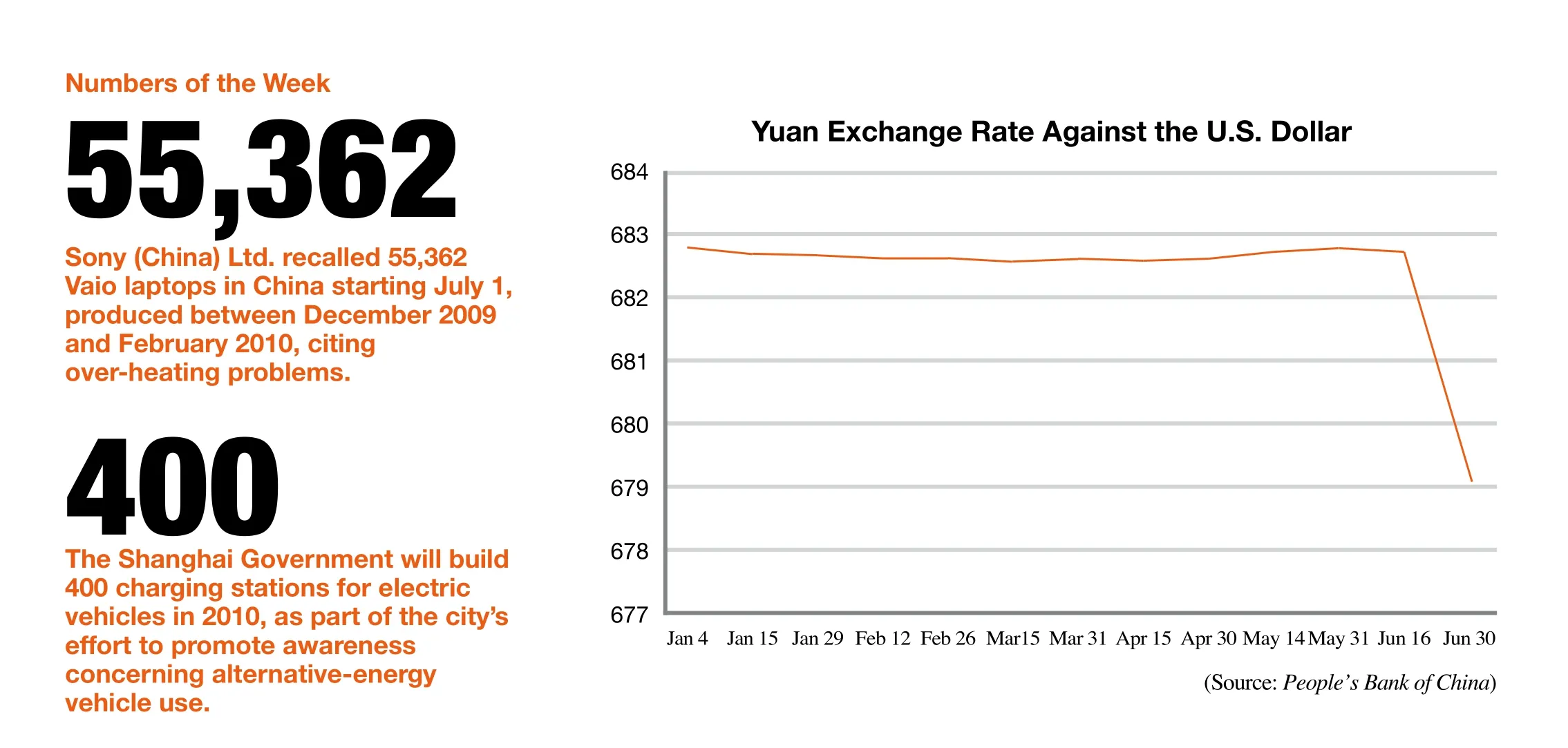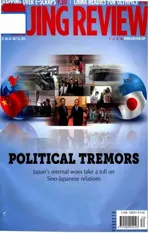MARKET WATCH
2012-09-12
MARKET WATCH
TO THE POINT: Chinese stock markets plunged along with their global counterparts—the benchmark index lost 26.82 percent in the first half of this year, the worst performance among nations worldwide. China’s manufacturing sector slowed and was clouded by a sense of pessimism as the June purchasing managers’ index dropped by 1.8 percentage points compared with May. Electronic manufacturer Foxconn plans to build a new large-scale plant in Henan Province to cut costs. Ping An Insurance tries to merge two banks to establish a stronger banking presence. Shanghai topped other cities as the most important financial center in China and a growing world financial hub.
By LIU YUNYUN
Stock Market Nightmare
A bearish mood dominated the Chinese stock markets in the frst half of this year with the benchmark Shanghai Composite Index dropping 26.82 percent by June 30.
On June 30, the Shanghai Composite Index fell to 2,398 points, the lowest in 14 months, on concerns of tightening measures in the real estate market and on money supply.
“Stocks will decline further,” said Li Jun, a strategist at Central China Securities Holdings Co. “We’ll soon see not-so-optimistic economic data in July and there’s no sign of a reversal in the tightening policies.”
Agricultural Bank of China Ltd. (ABC), the last “big four” state-owned commercial bank that has not been listed, started issuing shares in Shanghai and Hong Kong stock markets on July 1. It is expected to be the biggest initial public offering in the country, and will absorb $21.5 billion-23.8 billion.
The scale of the listing triggered fears of an investment shortage in other stocks, as many investors have sold shares to buy ABC stocks.
But some analysts believed the timing of the massive market loss is just right. Chinese stocks are still the most “overvalued” in Asia, excluding Japan, even after a drop in the market’s premium, says Credit Suisse Group AG.
Morgan Stanley, BNP Paribas SA and Nomura Holdings Inc. expected a stock rally citing China’s June 19 decision to end the yuan’s two-year peg to the dollar, which could help curb infation and asset bubbles.
Manufacturing Slows
The Purchasing Managers’ Index (PMI) for China’s manufacturing sector stood at 52.1 percent in June, down 1.8 percentage points from the fgure in May, said the China Federation of Logistics and Purchasing.
The PMI index slowed for the second consecutive month, indicating a moderation in the pace of China’s manufacturing expansion, said the China Galaxy Securities Co. Ltd.
The PMI includes a package of indices to measure manufacturing sector performance. A reading above 50 percent indicates economic expansion, and below 50 percent indicates contraction. This was the 16th straight month that the index was above 50 percent.
“Since the PMI is based on firm-level surveys, the draconian property tightening measures in China, and the European debt crisis could weigh on manager sentiment. This could in turn impact the survey results,”said Lu Ting, an economist of the Bank of America-Merrill Lynch.

(Source: China Federation of Logistics and Purchasing)
“The June index indicates China’s economic growth is at a key stage, turning to stabilization. The foundation for a new round of sustainable growth is forming, and thisneeds to be consolidated,” said Zhang Liqun, a researcher with the Development Research Center under the State Council.

Numbers of the Week 55,362 Sony (China) Ltd. recalled 55,362 Vaio laptops in China starting July 1,produced between December 2009and February 2010, citing over-heating problems. 400 The Shanghai Government will build400 charging stations for electric vehicles in 2010, as part of the city’seffort to promote awareness concerning alternative-energy vehicle use. Yuan Exchange Rate Against the U.S. Dollar 684 683 682 681 680 679 678 677 Jan 4 Feb 12 Mar15 Apr 15 Jan 15 Jan 29 Feb 26 Mar 31 Apr 30 May 31 Jun 16 Jun 30 May 14 (Source: People’s Bank of China)
Foxconn’s New Plant
Foxconn International Holdings, the manufacturer for global electronic giants like Apple Inc., Panasonic and Dell, plans to set up a plant in central China’s Henan Province.
Foxconn, which came into the spotlight after 13 in-plant suicides since the beginning of this year, currently has operations in south China’s prosperous Shenzhen in Guangdong Province.
A recruitment announcement published on the government website of Hebi City in Henan has caught the attention of workers nationwide—Foxconn needs 100,000 employees for its new factory in the province. Cities in Henan are already competing for the plant’s site.
Workers at the new plant can expect a monthly salary comparable to their Shenzhen peers, between 2,500-3,000 yuan ($366-439), according to the recruitment notice. The notice also said overtime work would be no more than three hours a day and a one-day break is guaranteed each week.
Foxconn intends to cut costs as local governments in Henan have vowed to provide preferential treatment in terms of land use, taxation and logistics services.
Analysts forecast Foxconn’s move inland might prompt other manufacturers to follow since establishing a business in coastal areas has become more expensive.
Officials of Guangdong Province said in May that projects with low added value should be moved to inland, and Foxconn must cut its employees engaging in low-end production to 100,000 in Guangdong.
Bank Merger
Ping An Insurance (Group) Co. of China Ltd., China’s second biggest insurer, is considering merging its banking unit with Shenzhen Development Bank Co. (SDB) to get around rules preventing insurers from controlling more than one lender.
Ping An Insurance has stakes in two banks—Ping An Bank Co. and SDB.
Ping An Bank and SDB, both based in the southern city of Shenzhen, are working on an “unprecedented major restructuring,”according to announcements from both companies on June 29. Shares of Ping An Insurance and SDB were recently suspended from trading.
Combining Ping An Bank and SDB would give Ping An Insurance control of a lender with 809 billion yuan ($119 billion) in total assets and help it avoid falling foul of regulations barring insurers from exerting power over two banks. Ping An Insurance is buying a 29.99-percent stake in SDB.
“You don’t want to pitch your own units against each other,” said Luo Yi, a Shenzhenbased analyst at China Merchants Securities Co. who called the insurer a “strong buyer.”
“The merger would extend Ping An’s reach in the banking market and broaden its customer base.”
Financial Prowess
The Shenzhen-based China Development Institute (CDI), a think tank of the State Council, recently released the 2010 China Financial Center Index, providing a fnancial map of the country.
For the second consecutive year, Shanghai claimed the title as China’s top fnancial center, followed by Beijing, Shenzhen, Guangzhou and Hangzhou. The biggest improvement was made by Chongqing, which moved up 13 spots to No. 8.
The index analyzed 29 cities across the country, assessing many factors including the financial industry, institutions, markets and environment.
As the axis of global financial industry shifts eastward, Chinese cities including Beijing and Shanghai are on course to become top players in the world’s fnancial game.
“Compared with Shanghai, Beijing’s financial market scale has become a stone around its neck as it battles for a place in the world financial club,” said Zhang Jiansen, editor-in-chief of the index and a senior research at the CDI.
The Shanghai Stock Exchange is the beating heart of Chinese fnancing industry, much like the New York Stock Exchange is to the United States. The Shanghai Gold Exchange and Futures Exchange are also important to China’s fnancial market.
“But Shanghai has problems of its own,”said Zhang. “Vigorous efforts are still needed to improve its social welfare system and appeal to fnancial institutions.”
